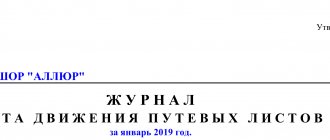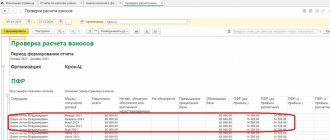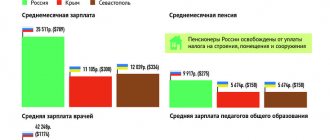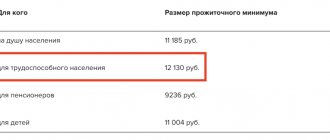Document role
The waybill must be issued by individual entrepreneurs and legal entities. The document solves several problems at once. This is due to the fact that it records all the important information regarding the operation of the car, including:
- its technical condition;
- mileage traveled;
- driver's working hours;
- completed moves during the shift;
- consumption of fuels and lubricants, etc.
Based on all this data, control is carried out over the use of the vehicle and the driver’s labor efficiency, and in the future, the accounting department of the enterprise calculates wages for the driver, mechanic and dispatcher.
The waybill is filled out for various vehicles: cars, trucks, as well as special equipment and construction equipment.
Who fills out the form
Maintaining waybills is usually the responsibility of the head of a structural unit, accountant, dispatcher or other employee (sometimes these documents are issued by the head of the organization himself).
Attention! Drivers should not be allowed to fill out waybills.
The driver’s task to correctly prepare the waybill is only to sign the acceptance and delivery of the car at the end of the work shift, as well as make notes on the completed transfers.
The waybill is issued to the driver against signature, and the obligatory condition for its receipt is the submission of the document for the previous day.
In some cases, a waybill can be issued not for one work shift, but for a longer period (for example, for intercity transportation).
How to assign those responsible for registration
All responsible employees whose signatures are on drivers’ waybills (for example, a dispatcher or a nurse) are appointed by separate orders of the manager. This document contains the following information:
- Name;
- information about the appointed employee and basic information about the position;
- date of return to work;
- reference to the regulations that guide the specialist (staffing table, job description, regulations on the unit, etc.).
Features of filling out the sheet
With the introduction of new details in 2022, companies will have to supplement existing forms approved by Decree of the State Statistics Committee of the Russian Federation dated November 28, 1997 No. 78, or develop their own. The forms that the organization will use must be fixed in the accounting policies.
The document is kept in paper (printed) form, information is entered into it with a ballpoint pen of any dark color (other writing tools - felt-tip pens, pencils, etc. should not be used).
When filling out the waybill, you should avoid blots and mistakes. If any mistake does occur, it is better to fill out a new form, but if this is not possible, you need to correct the incorrect data very carefully. You can either cover them up with a corrector, or cross them out and write the correct information on top (by making an o next to them). All edits must be certified by the signature of the person who made them.
After issuing a waybill, the form must be signed by the responsible persons, and also certified by the seal of the company (provided that the use of stamps for endorsement of such papers is enshrined in the company’s accounting policy).
Before moving on to the example of filling out a document, let’s say a few words about the procedure for entering information into it.
The form is filled out by the responsible person before the car leaves the garage. The sheet is signed by: a mechanic who monitors the technical condition of the vehicle, a medical worker who certifies the physical condition of the driver, the driver himself and the responsible employee.
Important! During the period for which the waybill is issued, the car can be used by several drivers. In this case, you can open several sheets: for each driver for one vehicle.
Simplification of accounting for fuel costs in 1C: Accounting 8
Starting from version 3.0.74 in “1C: Accounting 8” you can keep track of fuel using waybills. In order for the new feature to become available to the user, you will need to enable the corresponding functionality (section Main - Settings - Functionality). On the Inventory tab, you must set the Waybills flag (see Fig. 1). After enabling this setting, a new document appears in the program - Waybill.
Rice. 1. Setting up the program functionality
A waybill is issued for each vehicle. This document is used to substantiate fuel expenses for income tax purposes. The Waybill also indicates the amount of fuel that was purchased and consumed during the flight. In the full interface, the document is available in the Purchases section. In a simple interface - in the Documents section. Let's take a closer look at the new document.
Features of the new document “Waybill”
Using the Waybill document (Fig. 2) of the program, the user can:
- take into account information about the route of a passenger car that is used for business purposes. Moreover, this can be either the organization’s own car or a rented one, as well as personal transport belonging to an employee of the organization;
- reflect the purchase of fuel in cash or using a fuel card;
- take into account fuel consumption in the vehicle tank;
- take into account fuel costs in accounting and tax accounting (for profit tax purposes, when applying the simplified tax system with the object “income reduced by the amount of expenses”, as well as for the professional deduction of an individual entrepreneur when paying personal income tax).
- print the waybill according to the standard intersectoral form No. 3 (approved by Resolution No. 78) or in a simplified form;
- print an advance report in form AO-1 (approved by Resolution of the State Statistics Committee of the Russian Federation dated August 1, 2001 No. 55) - when purchasing fuel for cash.
Rice. 2. Document “Waybill”. Purchasing fuel using a cash receipt
Please note that the Waybill document has limitations: it can only be used by enterprises that are not transport companies and for which transportation is not their main activity. In addition, the Waybill does not support fuel accounting using coupons for fuel and lubricants. If the organization’s activities do not use passenger cars, refueling “in a can” is practiced, coupons for fuels and lubricants are used, and the fuel is stored in different warehouses, then accounting for fuels and lubricants should be carried out according to the previous (“traditional”) scenario. The methodology for accounting for fuel using waybills required changes to the program.
Changes in 1C:Accounting 8 to automate cost accounting for waybills
As part of the automation of accounting for fuel costs using waybills in 1C: Accounting 8, starting from version 3.0.74, the following changes have occurred:
- Third order subaccounts have been added to account 10.03 “Fuel”:
- 10.03.1 “Fuel in warehouse”;
- 10.03.2 “Fuel in the tank.”
Subaccount 10.03.1 takes into account the availability and movement of petroleum products and lubricants intended for the operation of vehicles, technological needs of production, energy generation and heating, solid and gaseous fuels. Analytical accounting is maintained by item, storage location and batch (receipt document). Each name is an element of the Nomenclature directory. Each storage location is an element of the Warehouses directory. To maintain analytical accounting for warehouses and batches, you must make the appropriate settings for accounting parameters (section Main - Chart of Accounts - Setting up a chart of accounts - Inventory accounting). Subaccount 10.03.1 is the “successor” of account 10.03, used in previous versions of the program, and is used in “traditional” scenarios for working with fuels and lubricants. Subaccount 10.03.2 takes into account the presence and movement of petroleum products in the vehicle tank. Analytical accounting is carried out by fuel types and vehicles. Each name is an element of the Nomenclature directory. Each car is an element of the Vehicles directory.
- A new subaccount 76.15 “Purchases using fuel cards” has been added to account 76 “Settlements with various debtors and creditors”. This sub-account is intended for quantitative accounting of payments for fuel purchased by an organization using fuel cards in the currency of the Russian Federation. Analytical accounting is carried out for individual types of fuel (subconto Nomenclature) and cars (subconto Vehicles).
- A new program object has appeared - Vehicle (an element of the Vehicles directory), which can be accessed from the Directories - OS and Intangible Materials section. If a car is accounted for in an organization as a fixed asset (FPE), then the Vehicle (Fig. 3) is created automatically when the vehicle is registered with the Federal Tax Service (fixed asset card - link Register), since the Register entry of a vehicle contains all necessary information. Rented cars and personal vehicles of employees used for business purposes should be entered manually in the Vehicles directory;
- For the document Receipt (act, invoice), a new type of operation Fuel has appeared.
Rice. 3. Vehicle card
How to fill out a waybill
Information on filling out waybills is presented in the Order of the Ministry of Transport dated September 11, 2022 No. 368. The document replaced the previously valid order of the department dated September 18, 2008 No. 152.
As an example, we consider a waybill for a passenger car (modified unified form No. 3). Our form and sample already include the new mandatory details for 2021.
So, the following are written in order on the sheet:
- Series and sheet number.
- Date of document creation.
- Information about the owner of the vehicle. For a legal entity, indicate: name, legal form, address, telephone number, OGRN. For individual entrepreneurs - full name, postal address, telephone number, OGRNIP.
- The name of the organization that compiled the document and its address.
- OKPO code.
- Information about the validity period of the waybill: date, month, year. This is the period during which the vehicle can be operated according to this waybill. You can also issue a sheet for several days (if the route is long) - then the start and end dates of the operation period are noted.
- Transportation information. This requirement has been introduced since 2022. We describe the features of filling it out below.
- Make of the car (if the car is foreign-made, the model can be entered in Russian transcription) and other information about it (numbers, etc.).
- Mark on pre-trip control of the vehicle's technical condition. The props have also been introduced since 2022.
- Information about the driver: his full name, personnel number, driver's license number, driving class. Information about the license card must be entered if the driver operates using a license. This also includes information about medical examination - pre-trip and post-trip.
In addition, information about the task issued to the driver for the current shift is entered. It is noted here:
- who exactly issued the order: structural unit and name of the enterprise;
- delivery address;
- time of leaving the garage (exactly - in hours and minutes);
- signatures of the mechanic and driver.
After the trip, you should note the time of return to the parking lot, periods of waiting, downtime, destination of trips, etc., and also certify all this information with the driver’s signature.
On the right side of the document the following is indicated:
- first, data on the technical condition of the car at the time of departure: odometer readings certifying the serviceability of the car, signatures of the mechanic and driver, brand and code of the fuel used;
- then, after returning, the fuel consumption is described in detail (the tanker or fuel technician enters the data here): how much was issued according to the refueling sheet (in liters), how much was in the tank when leaving the garage and when arriving back, consumption (standardized and actual), and also information about savings or overspending;
- then the odometer numbers are entered, and the mechanic certifies all this again with his signature.
On the reverse side of the waybill, information about trips made during the work shift is indicated (in order). Here it is written:
- the address where the car left;
- destination;
- departure and return times;
- mileage traveled;
- driver's signature.
Finally, the form is filled out by an accounting employee who calculates the number of hours actually worked, the kilometers traveled, and, based on this, calculates the driver’s wages.
Why does the labor inspectorate check waybills?
The law of the Russian Federation provides for standards of working time and rest for employees. Inspectors pay special attention to this issue, since violations can always be found here. The work of drivers does not fit into the standards of ordinary employees: from now to now. The travel schedule must be organized in accordance with Order of the Ministry of Transport No. 15 (on the peculiarities of the working hours of drivers). Waybills are checked to ensure that the time counted as working time corresponds to the time sheet. Discrepancies with the specified time, including the technical preparation of the vehicle and the period spent undergoing a pre-trip medical examination, are considered a gross violation.
The regulations regulate the accounting rules and the driver’s work schedule, which he must familiarize himself with. The work regime according to the standards, developed in accordance with the Regulations, must be carried out by both managers and subordinates.
Read more about the new details for 2022
The updated rules for filling out waybills, which also contain a list of new details, are enshrined in the application by Order of the Ministry of Transport of the Russian Federation dated September 11, 2022 No. 368. Their validity period is from January 1, 2022 to January 1, 2027.
Shipping Information
Here you need to note the type of message and type of transportation. This information is presented in Art. 4 and 5 Federal Law dated November 8, 2007 No. 259-FZ, however, the Ministry of Transport commented on it in its letter dated March 3, 2022 No. DZ-468-PG and noted that in the “Type of transportation” column the organization must write one of the types below :
- regular transportation of passengers and luggage;
- transportation of passengers and luggage upon request;
- organized transportation of a group of children;
- transportation of passengers and luggage by passenger taxi;
- transportation for own needs.
Vehicle information
From the beginning of 2022, it is mandatory to indicate the make of the car or other vehicle, as well as the trailer (if any), on the waybill. Previously, it was necessary to write only the type of car and its model.
Here you also need to enter odometer readings when leaving the parking lot and entering it after completing your shift. You only need to write down the full kilometers traveled.
Medical examination and technical control notes
In normal condition, the vehicle's technical condition controller must write on the sheet: “Release to the line is permitted” and certify this with his signature.
The doctor must not only sign on the waybill that the driver is in satisfactory condition, but also write down:
- before the flight: “passed a pre-trip medical examination and was cleared to perform work duties”;
- upon returning from a shift after an examination: “passed a post-trip medical examination.”
If several drivers are included in the sheet, then a mark must be made for each of them.









